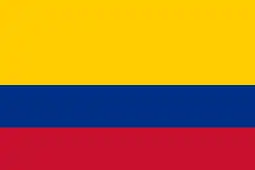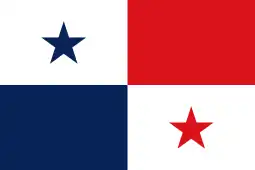United Nations General Assembly Resolution 500
The United Nations General Assembly Resolution 500 was approved on May 18, 1951, recommending a trade embargo on the People’s Republic of China and North Korea, in response to the intervention of Chinese troops in Korean War.
| UN General Assembly Resolution 500 | |
|---|---|
| Date | May 18th 1951 |
| Meeting no. | 330 |
| Code | A/RES/500 (V) (Document) |
| Subject | Additional measures to be employed to meet the aggression in Korea (Resolution adopted on the report of the First Committee) |
Voting summary |
|
| Result | Adopted |
| Part of a series on |
| North Korea and the United Nations |
|---|
  |
Background
In late 1950, hundreds of thousands of Chinese troops crossed into North Korea to help the troops of North Korea to fight the coalition led by United States and South Korea.[1]
On February 1, 1951, the United Nations General Assembly Resolution 498 was passed, condemning the aggression of the People's Republic of China.[1] This was followed by Report A/1802 of the United Nations General Assembly First Committee, containing the draft resolution which was considered by the General Assembly at its 330th plenary meeting on May 18, 1951; the resolution was passed with 47 votes to nil, with 8 abstentions and 5 nations not voting.[2]
The resolution in summary
The resolution recommended that all nations impose a trade embargo of weapons, ammunition and implements of war, as well as the means of their productions, along with atomic energy materials, petroleum, and transportation of strategic value, to areas under the control of the Central People's Government of the People's Republic of China and of the Government of North Korea.[2]
The voting in detail
For
 Argentina
Argentina.svg.png.webp) Australia
Australia.svg.png.webp) Belgium
Belgium.svg.png.webp) Bolivia
Bolivia.svg.png.webp) Brazil
Brazil.svg.png.webp) Canada
Canada Chile
Chile China
China Colombia
Colombia Costa Rica
Costa Rica.svg.png.webp) Cuba
Cuba Denmark
Denmark Dominican Republic
Dominican Republic.svg.png.webp) Ecuador
Ecuador El Salvador
El Salvador.svg.png.webp) Ethiopia
Ethiopia.svg.png.webp) France
France.svg.png.webp) Greece
Greece Guatemala
Guatemala.svg.png.webp) Haiti
Haiti.svg.png.webp) Honduras
Honduras Iceland
Iceland.svg.png.webp) Iran
Iran.svg.png.webp) Iraq
Iraq Israel
Israel Lebanon
Lebanon Liberia
Liberia Luxembourg
Luxembourg Mexico
Mexico Netherlands
Netherlands New Zealand
New Zealand Nicaragua
Nicaragua Norway
Norway Panama
Panama Paraguay
Paraguay Peru
Peru.svg.png.webp) Philippines
Philippines Saudi Arabia
Saudi Arabia Thailand
Thailand Turkey
Turkey.svg.png.webp) Union of South Africa
Union of South Africa United Kingdom of Great Britain and Northern Ireland
United Kingdom of Great Britain and Northern Ireland.svg.png.webp) United States of America
United States of America Uruguay
Uruguay.svg.png.webp) Venezuela
Venezuela Yemen
Yemen.svg.png.webp) Yugoslavia
Yugoslavia
Against
- None
Abstentions
Present Not Voting
Aftermath
The trade embargo imposed by the resolution forced the People’s Republic of China to rely on economic assistances from the Eastern Bloc, and later on economic self-sufficiency. Meanwhile, the embargo forced the then-British Colony of Hong Kong to transition its economy, from an entrepôt between China and the West, to an exporter of locally manufactured goods.[3]
After the Korean Armistice Agreement in 1953, nations gradually lifted their trade embargo against the People’s Republic of China; for the United States, the lifting of the embargo was announced by President Richard Nixon in 1971.[4]
References
- "This day in History: U.N. condemns PRC for aggression". A&E Television Networks. 2009.
- "Part 1: The United Nations. Section 3: Political and Security Questions. Chapter F: The question of Korea". Yearbook of the United Nations 1951. New York: Department of Public Information, United Nations. 1951. pp. 228–229. ISSN 2412-1541.
- Lau, Chi-pang (2009). "The embargo and industrialisation". Marine Department (Hong Kong). Retrieved 25 December 2021.
- Semple, Robert B. Jr. (1971-06-11). "PRESIDENT ENDS 21‐YEAR EMBARGO ON PEKING TRADE". New York Times. Archived from the original on 2018-06-13. Retrieved 25 December 2021.